Highlights From My Summer Internship
By Max Sasser
It’s hard to believe that the summer is over. It went by so quickly, but it felt like I lived a lifetime at Mount Washington. I loved every minute of my summer up there. It truly was a blast. I remember looking out of the window of the van going up the summit my first week. It amazed me at the sheer amount of fog on the summit! Then the snow came. I had never seen that much snow at the same time before! My shift was absolutely amazing. Karl, Amy, and Ryan are all stellar members of MWOBS and their love and passion for meteorology is obvious. Monica, our museum attendant, was also a rockstar. And, of course, my co-interns, Maddie and Zakiya, filled the summer with joy and laughter. They made this summer so enjoyable and I loved getting to know them.
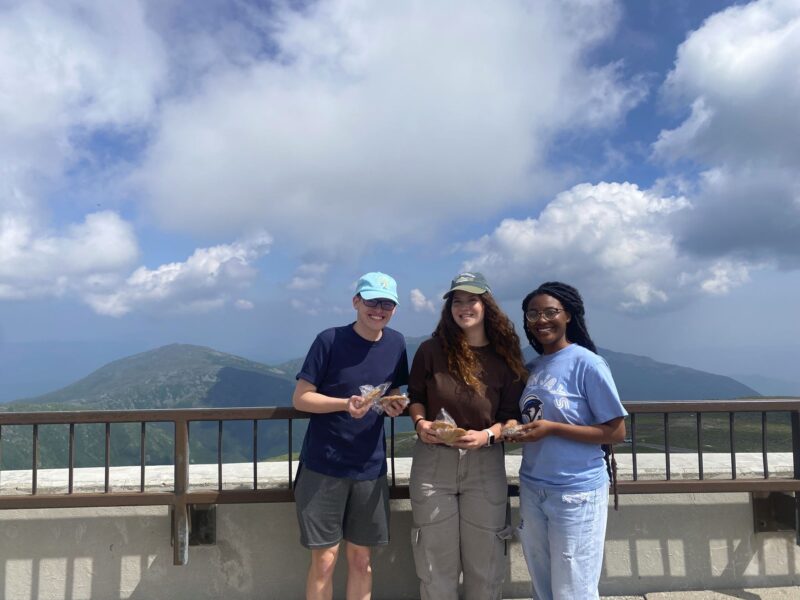
Left to right: me, Maddie, and Zakiya showing the yummy cookies from Big Dave’s with the Northern Presidentials in the background.
During my time on the summit, I engaged with the NHPR and RVG radio shows, created my own original forecasts for the higher summits of Mount Washington, and gave tours to the public. I learned through the radio forecasts that I can put on that “radio voice,” which was always funny to hear when playing the recording back to me. Before going to the summit of Mount Washington, I did not have extensive experience in forecasting. I did some forecasting for the University of Oklahoma as a student, but that was a collaborative effort. I never thought I would be responsible for a whole forty-eight hours or for a region as challenging as the higher summits of the Presidentials. However, I realized I could actually do it! The tours were a lot better than I anticipated. I thought I would not know how to effectively manage a large crowd or answer tough questions. However, I learned that I was actually really good at that. It also helps to have an observer like Ryan who has been around for so long. He always supplied some interesting trivia about the observatory that I used during my tour. Also, I learned that I have a special voice I use during my tours that my shift mates called my “ride operator voice.” Although I never heard it, I guess I have a knack for switching inflections. Perhaps a voice acting career is in the cards? Of course the best part about the tours was seeing kids stand amazed at the weather. The weather is cool, and it made the internship all the worthwhile to see the passion for weather burn in their eyes.
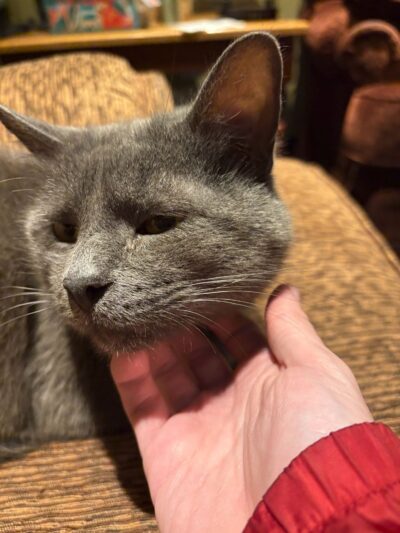
My most important duty as an intern, according to Nimbus, was making sure he got his daily quota of chin scratches.
Outside of my duties, I had lots of fun on the summit. From watching TV to playing card games to playing MarioKart and Super Mario Bros (Bubbles) to jigsaw puzzles, I had a lot of fun on my off time on the summit. Our dynamic worked really well and it was really fun to be around everybody on my shift. I never once had to pretend I liked the people on the shift because they were so fun! The summit also provided some beautiful scenery. I made my way to Mt Clay and took a couple of visits to the AMC Lakes of the Clouds hut. The Presidentials are so pretty. They also provide some challenging weather like the 124 mile per hour wind gust that happened in June. That doesn’t happen often! Also, one night, we got a great view to the Northern Lights. It was so beautiful!
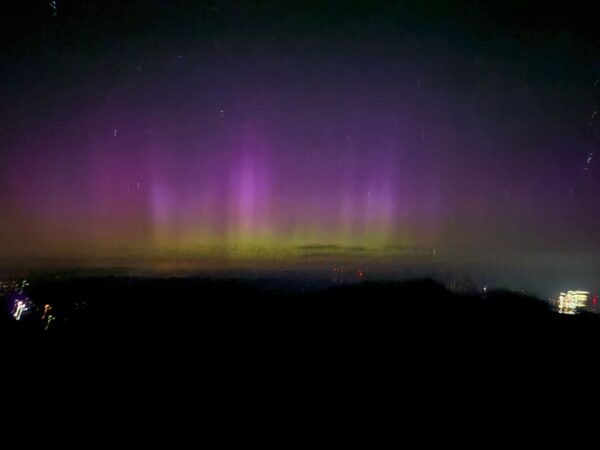
The northern lights taken from my phone. This was actually my first time seeing them dance with the naked eye!
I also conducted research on the summit. My project focused on the climatology of four different environmental parameters— convective available potential energy (CAPE), 2-m temperature, 2-m dewpoint temperature, and wind shear— that impact convective activity in the region of New England. This project aimed to provide preliminary trends of these parameters to predict future convective activity in the White Mountains. From the climatology, CAPE, 2-m temperature, and 2-m dewpoint temperature all increased from the 1980s to the 2010s. It would be cool if someone picked up this project and looked at the 2020s decade to see if it continues the trend of increasing. Wind shear behaved differently. From the 1980s to 2010s, wind shear decreased. With the increase in CAPE, 2-m temperature, and 2-m dewpoint temperature, it is clear that New England is prime for more convective activity. However, with the decline in wind shear, the convective cells that will form will be less likely to be organized. In simpler terms, New England will experience more storms, but will not be more likely to experience more supercells or organized multicellular storm systems. Ultimately, it is really important to understand how a changing climate can impact all types of weather hazards to help communities adapt to the changes.
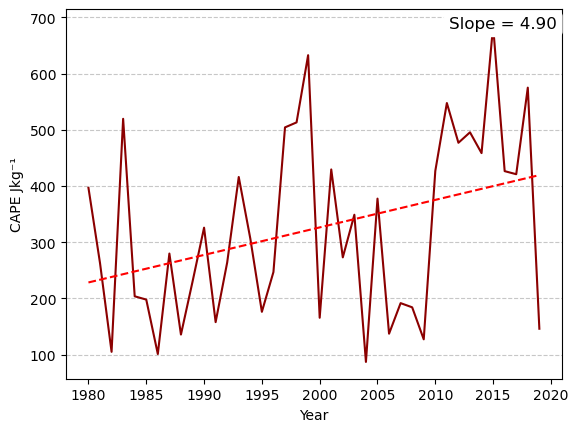
90th percentile CAPE values (dark red) and trendline (dotted red) in New England from 1980 to 2019.
Overall, I had a great summer and I am super bummed that it had to end. However, I am also excited because I know that this internship has set me up for a great future. I am forever thankful for the opportunity I had on the summit of Mount Washington. Sasser out!
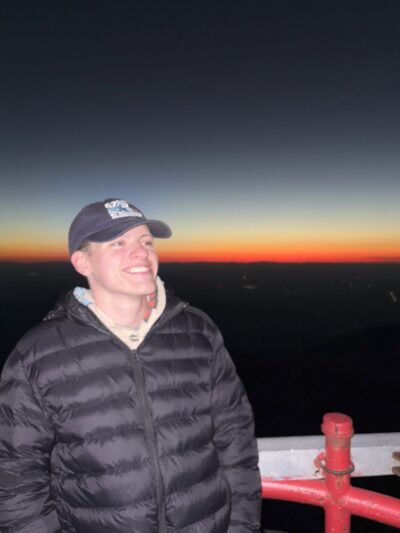
Me on top of the tower, making me at that moment the tallest person in New England.
Supporter Spotlight: Ryan Shepard
Supporter Spotlight: Ryan Shepard By Ryan Shepard and Carissa Milliman Ever since I was a kid, living in Western New York and growing up with lake effect snow, I thought harsh weather was incredibly
Supporter Spotlight: Erik Rider
Supporter Spotlight: Erik Rider By Wendy Almeida For Erik Rider, supporting Mount Washington Observatory comes from a lifelong fascination with weather and how it shapes daily life. Growing up along the Massachusetts coast, he
An Autumn Above the Clouds on Mount Washington
An Autumn Above the Clouds on Mount Washington By Cassie Farnsworth I don’t know how many times in life you get to say “it was exactly what I hoped it would be,” but my


